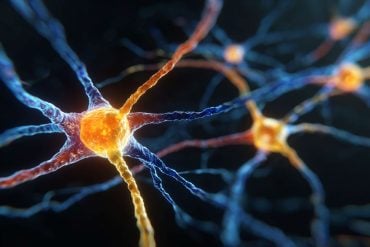Summary: Alzheimer’s disease spreads unevenly through the brain, and new mathematical modeling may help explain why. Researchers developed a network diffusion model that simulates how tau protein accumulates and spreads, identifying genes that either increase or reduce vulnerability.
The model reveals that more connected brain regions are more prone to damage, while isolated areas remain resilient. This approach offers a powerful framework for understanding disease progression and could guide the development of targeted treatments.
Key Facts:
- Network Vulnerability: Brain regions more connected to tau-affected areas deteriorate faster.
- Gene Classification: The model categorizes genes based on whether they act through the brain’s network or independently.
- Human Data Use: The study used real patient data to reflect Alzheimer’s progression in humans more accurately than animal models.
Source: UT Arlington
Mathematics may not be the first thing people associate with Alzheimer’s disease research. But for Pedro Maia, an assistant professor of mathematics and data science at The University of Texas at Arlington, analyzing how different parts of the brain interact like a network is revealing new insights into one of the world’s most devastating brain disorders.
Dr. Maia’s latest breakthrough—developed in collaboration with colleagues at the University of California–San Francisco’s Raj Lab—uses advanced mathematical modeling to help explain why Alzheimer’s disease spreads unevenly through the brain.

Their work reveals why certain brain regions are more vulnerable to damage from tau, a protein that accumulates in brain cells and disrupts their normal function, while other areas remain more resilient.
The study was recently published in Brain, a leading journal in clinical neurology.
“What’s interesting,” Maia said, “is how mathematics, data methods and data science, and mathematical modeling can actually bring some advanced insights into Alzheimer’s disease.”
Maia and his UCSF colleagues created a mathematical tool—called an extended network diffusion model—that tracks how tau protein builds up and spreads through the brain’s network of interconnected regions.
Using this model, researchers can classify genes into four categories: those that follow the brain’s network patterns and increase vulnerability; those that follow the patterns and provide protection; those that act independently but raise risk; and those that act independently and help protect the brain.
It’s a significant step in advancing Alzheimer’s research, helping to answer a question that has baffled researchers for years: Why do some brain regions deteriorate rapidly while others remain largely intact?
The model, as Maia said, “helps us untangle what was previously just a messy bag of genes.”
“The idea is that the brain isn’t uniform—different regions are made up of different kinds of cells and genes, and they’re connected differently too,” he continued.
“Regions that are more connected or closer to affected areas are more vulnerable. Isolated regions tend to be more resilient.”
The study used data from 196 people. Of those participants, 102 had been diagnosed with early-stage mild cognitive impairment, 47 with late-stage mild impairment and 47 with Alzheimer’s disease. Previous research by Maia and his colleagues relied on more controlled studies using rodent models.
“Human data, even though it is more challenging to work with given the variables involved, gives us direct insight into how Alzheimer’s progresses in real people,” Maia said. “If we want to develop treatments that work in humans, we need data that comes from humans.”
In Texas, nearly half a million people live with Alzheimer’s disease as the state ranks fourth in the nation for Alzheimer’s cases and second in Alzheimer’s-related deaths. That results in an estimated $24 billion expense for the state annually, according to the Texas Department of State Health Services.
For Maia, applying his mathematics background to Alzheimer’s research has been especially rewarding. He sees it as part of a broader shift in how the field of mathematics is evolving.
“In the past century, physics was the big inspiration for mathematical research,” he said. “Today, biology—especially the brain—is becoming the big source of inspiration. If you’re willing to chat in multidisciplinary settings, you’ll see that math modeling still has a big role to play.”
About this math modeling and Alzheimer’s disease research news
Author: Drew Davison
Source: UT Arlington
Contact: Drew Davison – UT Arlington
Image: The image is credited to Neuroscience News
Original Research: Open access.
“Selective vulnerability and resilience to Alzheimer’s disease tauopathy as a function of genes and the connectome” by Pedro Maia et al. Brain
Abstract
Selective vulnerability and resilience to Alzheimer’s disease tauopathy as a function of genes and the connectome
Brain regions in Alzheimer’s disease exhibit distinct vulnerability to its hallmark pathology with the entorhinal cortex and hippocampus succumbing early to tau tangles while others like the primary sensory cortices remain resilient.
The quest to understand how local/regional genetic factors, pathogenesis and network-mediated pathology spread, together govern this selective vulnerability (SV) or resilience (SR) is ongoing.
Although many Alzheimer’s risk genes are known from gene association and transgenic studies, it is still unclear whether and how their baseline expression confers SV/SR to pathology.
Prior analyses have yielded conflicting results, pointing to a disconnect between the location of genetic risk factors and downstream tau pathology.
The spatial distribution of vulnerability doesn’t always align with genetic factors, suggesting a role for non-cell-autonomous mechanisms like transneuronal tau transmission.
We hypothesize that a full accounting of the role of genes in mediating SV/SR would require modelling of network-based vulnerability, whereby tau misfolds, aggregates and propagates along fibre projections.
We employed an extended network diffusion model (eNDM) and fitted it on tau PET data from 196 patients from the Alzheimer’s Disease Neuroimaging Initiative.
The fitted eNDM then becomes a reference from which to assess the role of innate genetic factors.
Using the residual (observed − model-predicted) tau as a novel target outcome, we obtained its association with 100 Alzheimer’s risk genes, whose baseline spatial transcriptional profiles were obtained from the Allen Human Brain Atlas.
Our eNDM was successful in capturing tau pathology distribution in patients. After regressing out the model, we found that while many risk genes have spatial expression patterns that correlate with regional tau, many others showed a stronger association with residual tau.
This suggests that direct vulnerability aligned with the network, as well as network-independent vulnerability, are conferred by risk genes. We report four classes of risk genes: network-aligned SV (SV-NA), network-independent SV (SV-NI), network-aligned SR (SR-NA) and network-independent SR (SR-NI), each with a distinct spatial signature and associated vulnerability to tau.
Remarkably, using gene ontology analysis, we found that the identified gene classes have distinct and sometimes surprising functional enrichment patterns. Network-aligned genes broadly participate in cell death, stress response and metabolic processing; network-independent genes in amyloid-β processing and immune response.
These previously unreported segregated roles point to multiple distinct pathways by which risk genes confer vulnerability or resilience in Alzheimer’s disease.
Our findings offer new insights into vulnerability signatures in Alzheimer’s disease and may prove helpful in identifying potential intervention targets.






